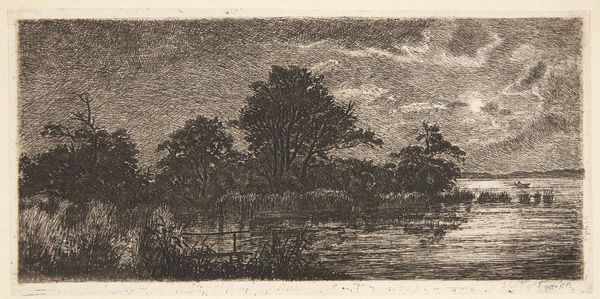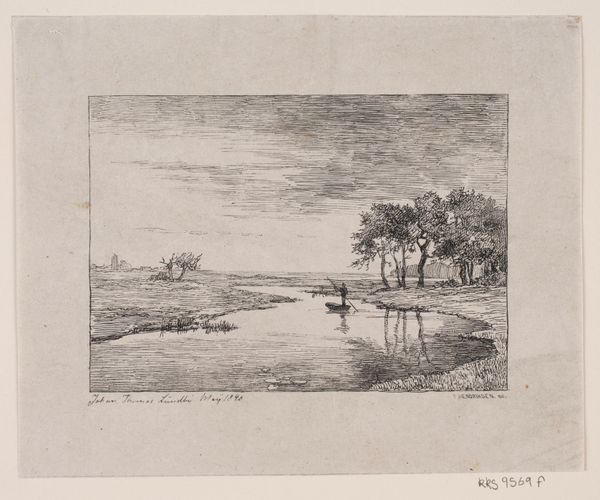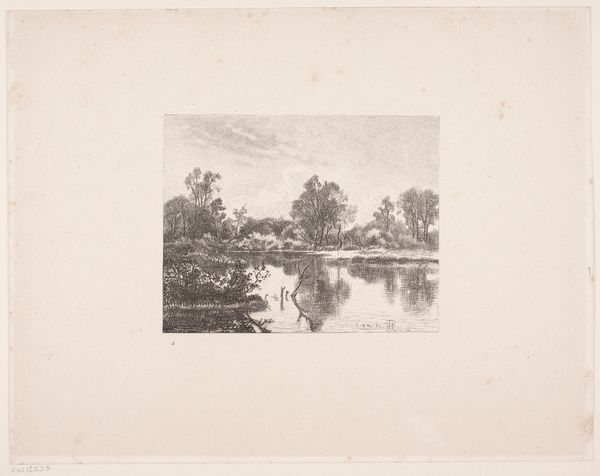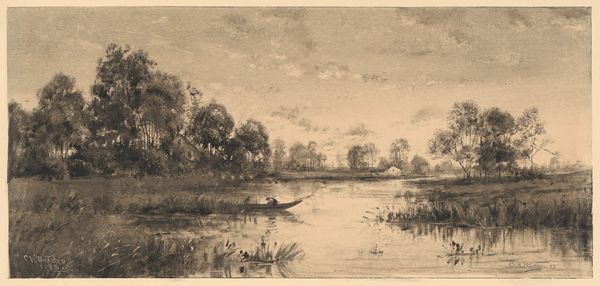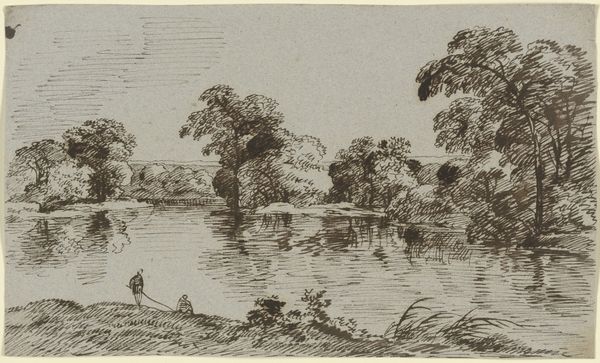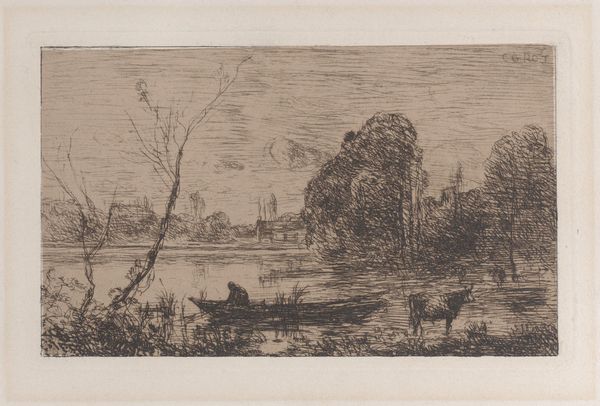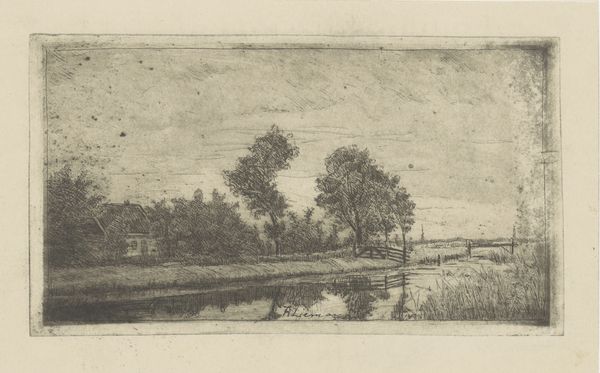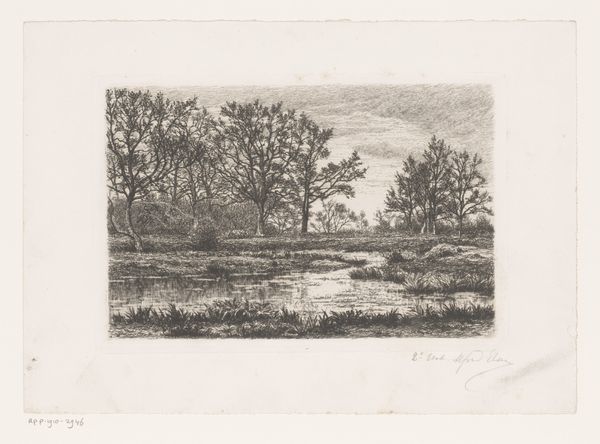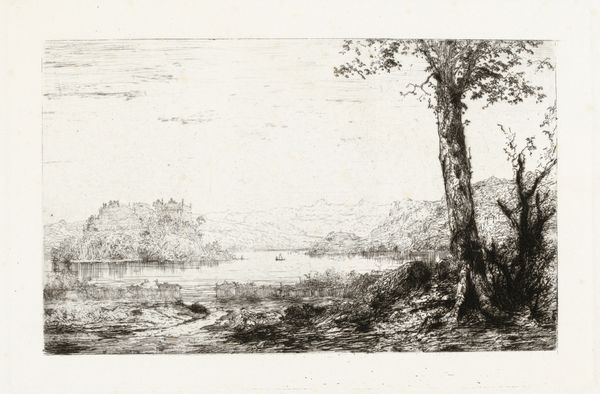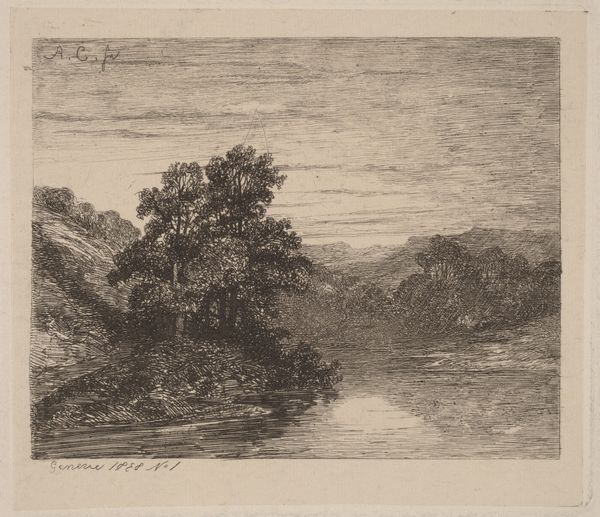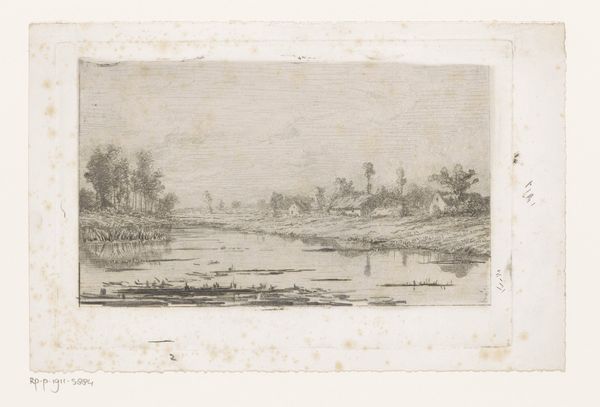
print, etching
# print
#
impressionism
#
etching
#
landscape
#
realism
Dimensions: 127 mm (height) x 188 mm (width) (plademaal)
Curator: What whispers does this etching carry from 1882? Carl Bloch titled it "Bondedammen ved Hellebæk. Måneskin," which translates to "The Dyke at Hellebæk. Moonlight." Editor: Well, immediately I see tranquility, an eerie silence blanketing this dark expanse of water, reflecting that lonely orb hanging just above the horizon. The limited grayscale palette enhances the moonlit stillness, like an afterimage of quietude. Curator: Etching is so perfect for this, isn't it? Think about it—Bloch dragged a sharp tool, called a burin, across a metal plate, the incisions catching ink to reveal this ethereal scene when pressed onto paper. Each delicate line contributes to this overall atmosphere of calm. It's labor intensive, each image pulled an act of almost painstaking creation. Editor: It makes you consider the paper itself too. The type of paper, the consistency, how well it absorbed the ink… even that’s part of the equation in the finished artwork. Like you said, etching IS labor intensive and the paper used is a raw material itself. I also see two…ducks?…or waterfowl making ripples at the foreground; they certainly contrast that smooth glass effect across the still body of water, don't they? Curator: They certainly do. Those ripples, rendered so precisely, speak to Bloch's attention to detail, typical of realism, although his contemporary affiliation with impressionism shines through with this etching as well, especially in the soft portrayal of the moonlight itself, an embrace rather than a hard glare. Almost like a memory of moonlight rather than documentary record of it. Editor: Precisely! That play of memory you talk about must come through etching, because it is print, not unlike images reproduced again and again by the printing press in newspapers. I am beginning to question our definitions of craft or artwork because of etching... is this "high art" just because it is signed? Or were printed images in media just like this for mass consumption? Curator: Food for thought, certainly! It really blurs the line, and in the end it’s the blurring, the interplay between all these elements, which makes this particular etching resonate. The dance of light and shadow, the material process… Editor: Exactly. And that material dance, it tells stories of labor, of social history. Very different stories from just seeing "a pretty picture."
Comments
No comments
Be the first to comment and join the conversation on the ultimate creative platform.

